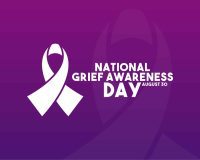
To be eligible for hospice care under Medicare in the United States, your doctor needs to have certified your disease prognosis as six months or less regardless of age or type of illness. Once you find that you’re eligible, it can be confusing or overwhelming to know the next steps on figuring out how to chose a hospice. Don’t hesitate to question your doctor or provider on the quality and most appropriate care you’ll need during this final phase of life.
Begin by asking your doctor about hospice providers he or she could recommend that they are familiar with and ask the same question of nurses or other healthcare providers you’ve been under the care of. They will be the ones most familiar with providers people often use. To help you in your search, links to some hospice and palliative care in the U.S. and other countries are also provided at the end of this article.
When choosing a hospice team, there are certain basic questions you want answers to such as what the hospice’s patient-to-caregiver ratios are. You want to be sure that you will be given adequate time during a visit and not have a nurse or team member rushing to move on to the next patient. It’s also a good idea to ask about the continuity of care, meaning will you have the same care providers over time.
It’s also important to find out the average frequency of home hospice visits and the response time and procedures for after-hours questions and concerns. The frequency of visits and procedures should be included in your copy of the care plan you’ll be given by hospice that lists specific duties, workdays and hours, and the contact information for the hospice care supervisor.
Sometimes, though, you don’t know what you don’t know, and so have no idea what to ask, nor what you should ask. To help you along, here is a list of additional questions that will help you get started on your way to being more informed:
What is the typical response time if we need to reach someone at the hospice after normal business hours, or on weekends and holidays?
How quickly will a plan of care be developed for the individual by the hospice?
How quickly can we expect pain and/or symptoms to be managed?
How quickly will the hospice respond if medications do not seem to be sufficiently addressing pain or symptoms?
What does the hospice do when someone’s pain cannot be adequately managed at home?
If there is a need for inpatient care, how will that be addressed by the hospice?
Are there any services, medications, or equipment that the hospice doesn’t provide?
What kind of out-of-pocket expenses should the family anticipate?
How often will a hospice team member visit and how long will most visits last?
When the hospice orders medication, where can it be picked up, or is it delivered by the hospice?
Do members of the team providing care have additional training and certifications for their hospice and palliative care skills?
What is expected of the family caregiver?
Will the hospice provide training to family caregivers?
Can the hospice provide respite care to give family caregivers a break and how does the hospice arrange that?
What help do your hospice volunteers provide and how can we request help from a volunteer?
Does the hospice measure quality of care and does it have any quality data it can share?
What kind of bereavement support is offered by the hospice?
If we are unhappy with some aspect of care the hospice is providing, who can we contact at the hospice?
One of the first things that happens when choosing a hospice care provider is setting up an initial meeting. An intake coordinator will take some information from you, including who the meeting will be with and the healthcare provider who referred you to hospice and will meet with you wherever you are–your home, the hospital, or an assisted living or skilled nursing facility.
During your conversations, be aware of whether or not you “click” with someone. There’s something to be said about chemistry! Although the hospice representative may not be someone directly involved in your care, you should feel comfortable with whomever the hospice has sent to make a first impression. Choosing a hospice provider is an important decision. You are not only letting someone help you manage your medical needs, but you’re letting strangers into your home to help you make important decisions about your end-of-life care.
Below are some additional links to help find hospice and palliative care in the U.S. and other countries:
National Agency Location Service
A part of the National Association for Home Care and Hospice, this Web site lets you can search for home care and hospice by location, payment types, services offered, and more.
Hosted by National Hospice and Palliative Care Organization—Searchable directory for finding a hospice by address, city, zip code, or name
Provides a searchable database of hospice and palliative care services in the UK and Ireland.
Canadian Hospice Palliative Care Association
Contains searchable database of hospice and palliative care services in Canada.
Palliative Care Australia Directory of Services
Palliative care providers in Australia.
While death is not an option for any of us, we do have choices about the services we use at the end of life. Hospice is the best option in the last months of life because it offers a wide variety of benefits, not only to those of us who are dying, but also to those we are leaving behind.




